Algal Blooms and Nutrient Enrichment
Algal Blooms and Nutrient Enrichment
By Bill Willis
January 5, 2017
Discovery Lake Seems to Keep Changing. What’s Going On?
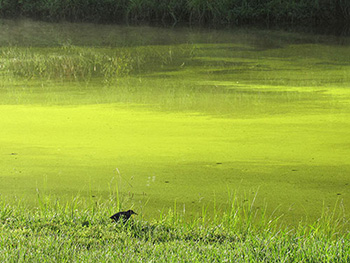
Photo courtesy of Bill Willis
Discovery Lake’s appearance changed noticeably this past summer. Dark green mats of Lyngbya wollei, flourished along the shoreline, along with several green algal and blue-green cyanobacteria blooms occurring. The lake was responding to nutrient overload a phenomenon known as eutrophication. Eutrophication is the process of enrichment of lakes with nutrients, and the associated biological and physical changes. Human activities can influence the rate and severity of the response. Introducing fifty new grass carp couldn’t keep pace with the various algal growths. Also NIEHS increased the number of grass carp in the lake, in an attempt to slow algal growth, but this was not enough to keep the algae at bay.
What could cause the nutrient enrichment?
Enrichment is usually related to excess nitrogen and phosphorous from storm water runoff. In other urban settings, it might be from a sewage spill, but that’s not the case here. Confidence is high that the primary nitrogen source was urea used for snow/ice melt on Institute roads and sidewalks. Changes in weather conditions across the southeast have also increased the frequency of algal blooms across North Carolina.
Other possibilities include:
- Phosphate rocks breakdown from soil erosion
- High nitrogen urea fertilizer
- Nitrogen rich grass clipping discharged into the lake
- Nitrogen rich goose and duck feces deposited in or near the water
- Atmospheric nitrogen and lightening produced nitrogen compounds in the lake
- Polluted rain water containing nitrogen and phosphates runs into the lake
- Disturbance of the bottom sediments releasing bound nutrients.
What are the biological and physical changes of lake eutrophication?
- Water turns green or turquoise from floating algae
- Algal mats form along the shoreline
- Decaying vegetation creates odor, color, and taste changes (don’t drink the water!)
- Scum, foam, and oily slicks appear on the surface, moved by the wind
- Dissolved oxygen levels fall, causing some fish die
- In significant quantities, large blooms can be toxic to animals and humans
Where does the algae come from?
- Inflow from upstream sources.
- On the feet of migrating and local fowl.
- On the shells of turtles
- From humans on boats, fishing tackle, recreational items
- Storms with heavy rains and winds drop organisms.
What can be done to prevent?
- Remove or moderate the source if it is a point emission
- Maintain our population of various aged grass carp
- Insure that riparian zones are intact and stable
- Use alternatives to nitrogen as a deicer on campus
This summer, the North Carolina Division of Water Resources confirmed the presence of cyanobacteria and stated that the blooms didn’t constitute a toxic algal bloom condition. However, reduction in the nutrient load of the lake will help reduce the blooms and improve the overall appearance of the lake.
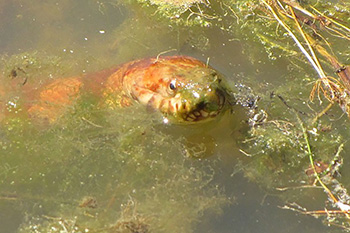
Photo courtesy of Bill Willis
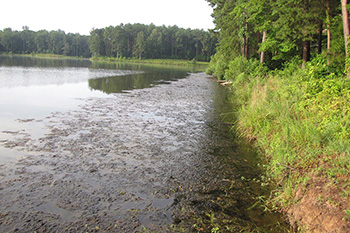
Photo courtesy of Bill Willis
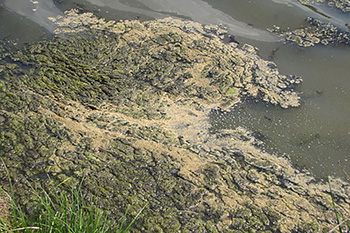
Photo courtesy of Bill Willis
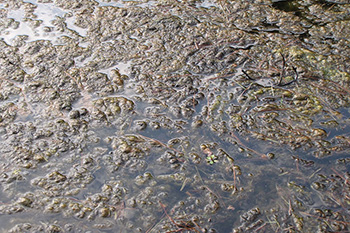
Photo courtesy of Bill Willis
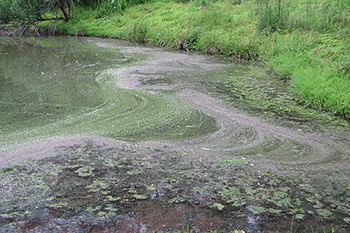
Photo courtesy of Bill Willis

Photo courtesy of Bill Willis
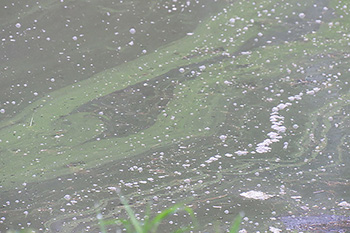
Photo courtesy of Bill Willis



